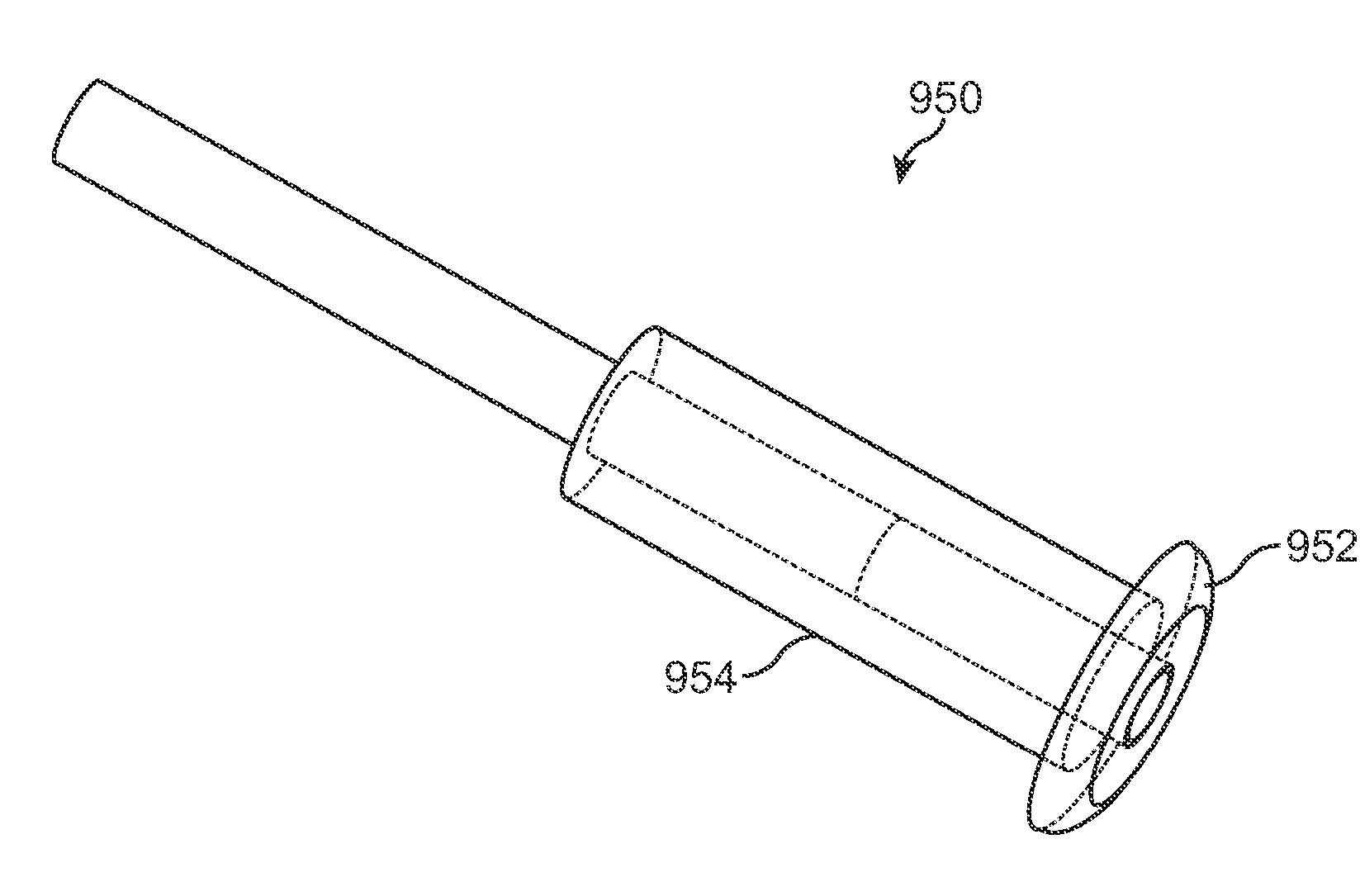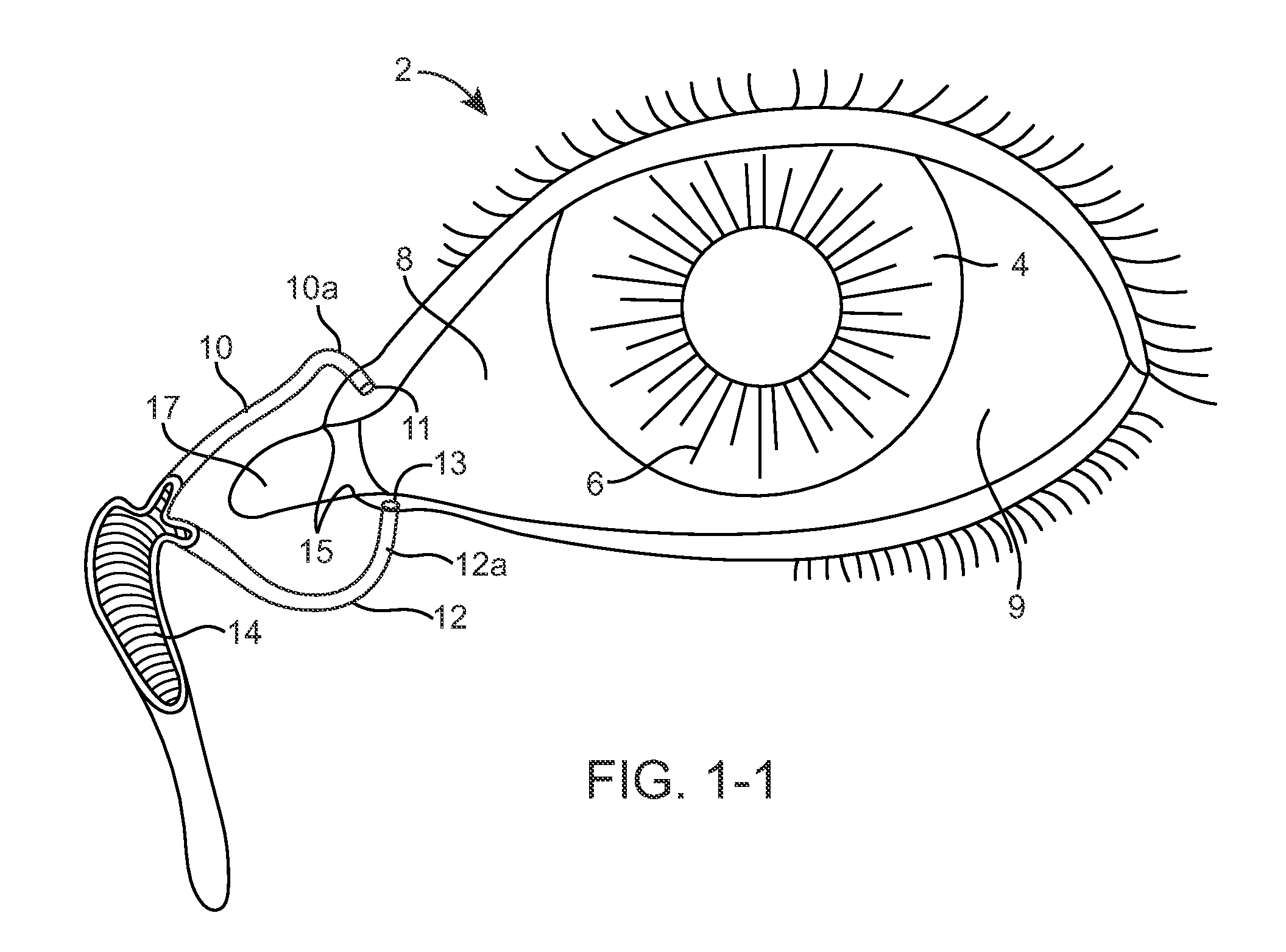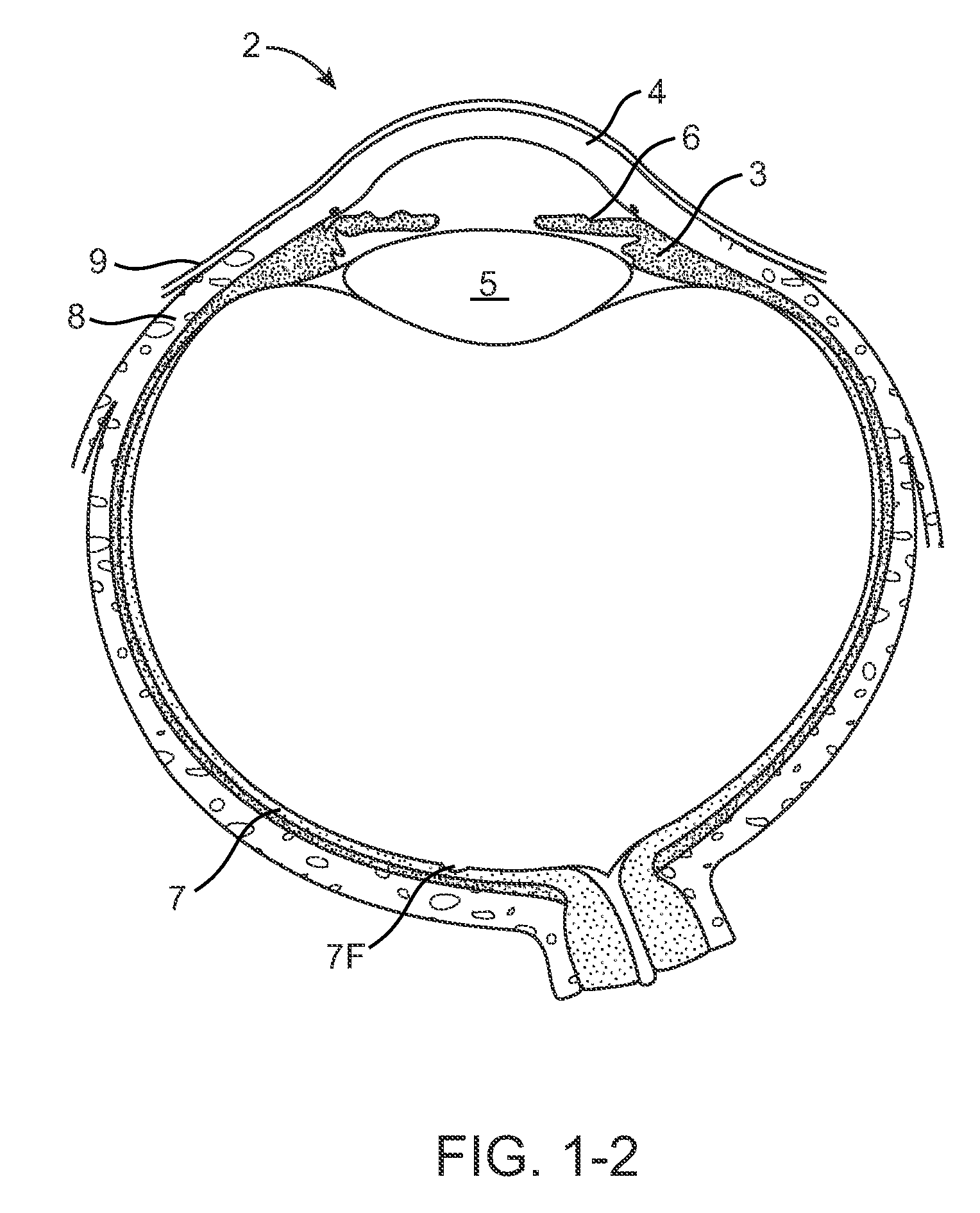Nasolacrimal Drainage System Implants for Drug Therapy
a drainage system and drug therapy technology, applied in the field of nasolacrimal drainage system implants for drug therapy, can solve the problems of affecting the efficacy of the therapies available, reducing vision and many times blindness, and patients may not follow the directed treatment regim
- Summary
- Abstract
- Description
- Claims
- Application Information
AI Technical Summary
Benefits of technology
Problems solved by technology
Method used
Image
Examples
Embodiment Construction
[0078]FIGS. 1-1 and 1-2 show anatomical tissue structures of an eye 2 suitable for treatment with implants, according to an embodiment of the present invention. Eye 2 includes a cornea 4 and an iris 6. A sclera 8 surrounds cornea 4 and iris 6 and appears white. A conjunctival layer 9 is substantially transparent and disposed over sclera 8. A crystalline lens 5 is located within the eye. A retina 7 is located near the back of eye 2 and is generally sensitive to light. Retina 7 includes a fovea 7F that provides high visual acuity and color vision. Cornea 4 and lens 5 refract light to form an image on fovea 7F and retina 7. The optical power of cornea 4 and lens 5 contribute to the formation of images on fovea 7F and retina 7. The relative locations of cornea 4, lens 5 and fovea 7F are also important to image quality. For example, if the axial length of eye 2 from cornea 4 to retina 7F is large, eye 2 can be myopic. Also, during accommodation, lens 5 moves toward cornea 4 to provide go...
PUM
| Property | Measurement | Unit |
|---|---|---|
| time period | aaaaa | aaaaa |
| time | aaaaa | aaaaa |
| water content | aaaaa | aaaaa |
Abstract
Description
Claims
Application Information
 Login to View More
Login to View More - R&D
- Intellectual Property
- Life Sciences
- Materials
- Tech Scout
- Unparalleled Data Quality
- Higher Quality Content
- 60% Fewer Hallucinations
Browse by: Latest US Patents, China's latest patents, Technical Efficacy Thesaurus, Application Domain, Technology Topic, Popular Technical Reports.
© 2025 PatSnap. All rights reserved.Legal|Privacy policy|Modern Slavery Act Transparency Statement|Sitemap|About US| Contact US: help@patsnap.com



